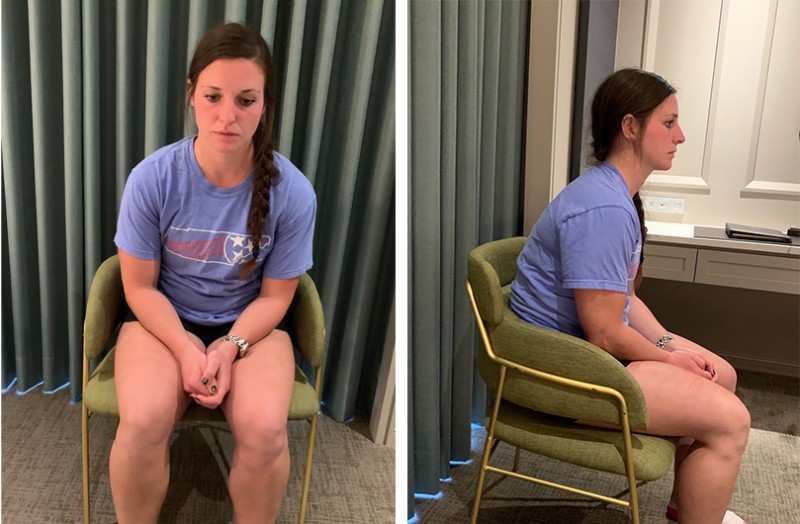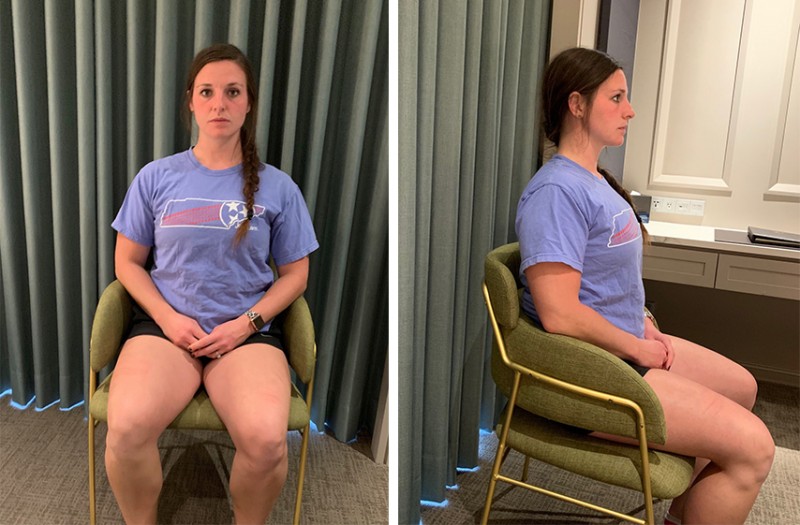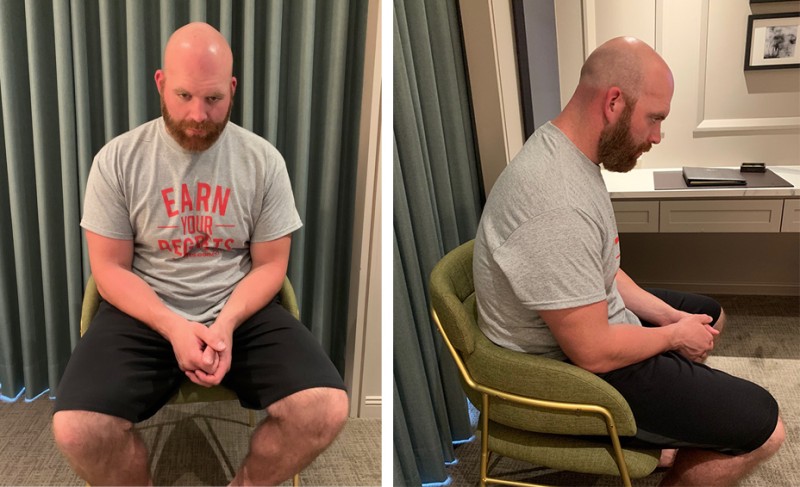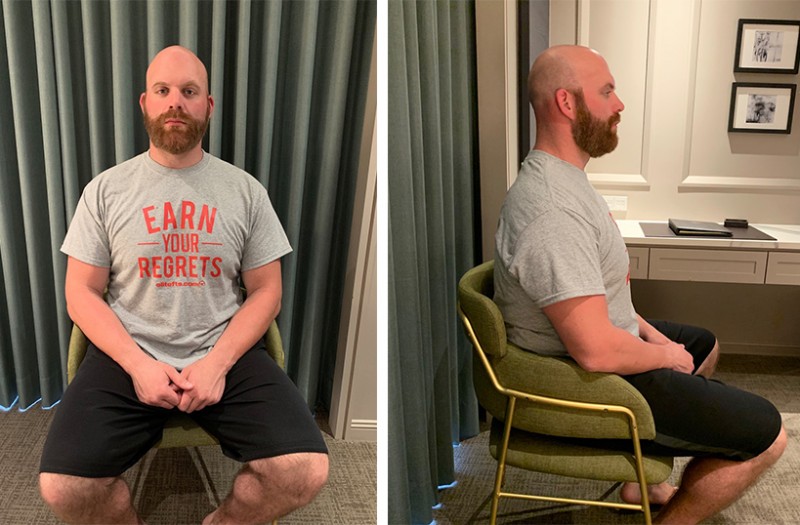
(Human) Physiology is the study of how the body functions and interacts with the world. Your physiology is operating at all times and during every situation you encounter in your world. How your physiology reacts to these situations affects the outcome of each scenario, whether you are aware of it or not. When we talk about performance and how to enhance the performance of our athletes or clients, this is solely a result of understanding physiology and how to manipulate one’s environment to achieve a desired physiological response. Because of this, the key to being able to increase performance is to better understand physiology.
What do you first think of when you think of sports performance? If you are like many, your first thoughts are of a physical nature (i.e., running faster, jumping higher, and lifting more weight). How many times have we heard the saying, “Sports are 80 percent mental and 20 percent physical?” Most will nod their heads in agreeance.
RECENT: Top-5 Exercises to Keep Your Spine Healthy
So why does the conversation often stop there? If the mental side of sports is so important, why are we so focused on the physical side? The answer is that most people simply do not understand this mental side. In fact, one of the youngest but fastest-growing fields of study in the body is neurology, which is improving our understanding of neurophysiology. Simply put — what is in the mind is in the body, and what is in the body is in the mind. So how can we use this understanding to better adapt our physiology to the world?
Posture and the Mind-Body Link
Much of understanding the interactions that the mind and body have is by simply being aware that they exist in the first place. Posture can play a pivotal role in physical and mental performance. Some studies have shown that those who spent time in a rounded, stooped posture prior to an interview did worse than those who adopted an upright posture. Still, other studies found that you are less likely to become a victim of robbery or assault when walking upright, alert, and looking passersby in the eye compared to being hunched over and looking at the ground or your phone. So why is this the case?
Any time we interact with other humans in our world, especially for the first time, our minds are sizing up and analyzing each other. This is simple physiology. Your brain needs to determine if someone approaching you is a friend or a foe, another alpha who will challenge you, or an individual who does not pose a threat. Much of this is determined through non-verbal communication and found in all animal populations, including humans.
Assuming a slumped posture is a sign of passiveness and submission. It says, “I am not a threat.” It also displays a lack of confidence and security, signals vulnerability, and for those who are opportunistic, it says, “I can be dominated.” This slumping is the individual already assuming a defensive posture to protect the vital organs and try to create security.
On the other hand, an upright, open, upright posture shows confidence and assertiveness. It says, “I am comfortable with my environment and am confident that I am not threatened. I will not be dominated so easily and can defend myself to attack.”
Now, let’s take this a bit further. Not only does the posture you hold impact your world, but it also alters the perception of the people around you. In turn, the posture taken by others will affect your perception of them as well. Take some notes of the following set of images and how you perceive them. How would you describe the individual in each picture? What characteristics would you label them with? How do you think that individual feels?




Performance Implications of Posture
In athletics, once we understand the effects posture can have, we can see it play its subtle but important role in competition. What happens when there is a momentum shift? Let’s imagine Team A and Team B are competing against each other when Team A has a big play at a crucial point in the game.
Team A is likely expressing an explosion of energy. They are up on their feet — some even jumping around. They will high five and chest bump each other and express loud, primal cheers. These actions are open, upright, and expansive in nature. This team is confident in their current situation in the competition, and the players on this team are moving towards each other and interacting more, creating a more impressive and imposing force that is one to be reckoned with.
Meanwhile, Team B will be moving into a more slumped posture with the shoulders forward and eyes and head down. They will also be moving away from each other and becoming more isolated. These players are more likely to dwell on this last play rather than block it out and move to the next one.
If left unchecked, this change in momentum can continue to spiral downward. The slumped, defeated posture now adopted by the team will lead to the body telling the mind that it is weak, threatened, and vulnerable. This will lead to a further lack of confidence and affect performance on subsequent plays. Poor performance causes more lack of confidence, more negative thinking, and less belief in Team B that they can win the game. This continually reinforces the slumped posture, closing the continuous loop.
Remember Keanu Reeves’ story about quicksand from The Replacements? One bad play leads to another, and then another. Your body becomes stressed and you try to fight back, but the more you fight, the worse it seems to get until you feel frozen. Why does this happen? Because you are fighting physiology. And without a proper understanding of how physiology works, you cannot properly address it.
Try It Yourself
Sit in a chair or stand in place. Take a moment to check in with yourself and see how you feel. Note any tightness, heaviness, or any other sensations you are currently feeling. This can be physical or emotional.
Now, drop your head and look to the ground. Let your shoulders follow you and assume a slumped or stooped over posture. Remain in this position for a minute and take note again of how you feel. Do you sense a change in your current mood? Do you sense any changes in your body?
Finally, move yourself into an upright posture. Head up, shoulders down and back, and eyes focused forward. What changes do you notice from the previous position?
Bonus test: If you have access to a team or group of individuals, this is a great experiment to utilize to better understand the mind-body and body-mind link and how it affects them.
RELATED: Touch as a Feedback Mechanism for Athletes
Start by splitting the group of individuals into two smaller groups. Have them stand at opposite ends of a room or hallway, facing the other group. Select one group that will adopt a slumped posture (implosion) and another to adopt an upright posture (explosion).
Instruct the slumped group to drop their head with their eyes toward the ground. Have them round their shoulders forward and allow their body to droop and collapse forward. Finally, have them breathe shallowly into their chest.
For the upright posture group, have them pull their shoulders back to expose their chest, keep their head up, and focus their eyes forward. Tell them to squeeze their butt, breathe into their belly, and make an intense game face.
Now, once both groups have assumed their postures, have each group walk to the opposite end of the room at the same time, effectively forcing them to pass by each other. Then, switch the posture in each group to adopt the opposite posture and have them walk to the opposite end of the room again. Observe the interactions you see between groups and when finished, ask the groups what they experienced during each posture.
The stooped posture group will avoid their alpha counterparts by changing their course or moving aside while passing through. They often feel intimidated and uncomfortable with the interaction. On the other hand, the upright group will feel energetic, confident, and powerful. Rather than change course to avoid confrontation, they will walk a straighter path and dare their passive counterparts to cross them.
Application
So what do we do about all of this? How can Team B from the first example get back on track and avoid a disaster in morale? The first step is simply knowing that these interactions are occurring and how they affect you. Once you see something, you cannot un-see it. This means that once your athletes participate in these experiments and understand how the body can affect the mind and vice versa, they can begin to understand how to notice when their body is falling into these patterns and break the “quicksand” cycle that is occurring.
For Team B, this is where great coaching and great team leadership is necessary. This is the time in which a coach needs to provide encouragement, tell his players to literally keep their heads and eyes up and do a belly breath — not just saying, “Keep your head up” as a figure of speech. The posture and breathing are crucial as they are literally signaling to the body “we are stressed” when done incorrectly and “everything is fine, we are good,” when done correctly.
Furthermore, it is up to the leaders of the team to understand that interaction with their teammates is crucial to the morale of the team and how they perform. Making a point to touch and interact with a teammate after a bad play rather than move away from your teammate and allow them to separate and sulk will be incredibly impactful.
Let’s say your quarterback just threw an interception. What happens? The quarterback shakes his head in disgust, then walks off the field by himself. He gets to the sidelines and is either met by a coach yelling at him or no one at all. He then goes and sits on the bench with his shoulders slouched and head more forward, either looking down at the ground, off into space, or up at the scoreboard. A few teammates interact with him with a half-hearted, “You’ll be alright.”
Imagine if this quarterback was interacted with by the same amount of teammates and positivity as if he just threw a touchdown. What do you think this would do for his ability to shake off the last mistake? Leaders innately recognize the importance of keeping the team together, but what if we armed them with the knowledge of why this is so important to do?
Teams are about the benefit of the group before the individual. In sports we talk about doing your job for the benefit will lead to success for the individual. This is usually talked about to build team unity, but what happens when a teammate makes a mistake? If you’ve ever made a mistake, chances are you are less upset about the mistake being your fault and more upset about how that mistake impacted your team. If a player is not met with overwhelming positivity from his team to pick up and move forward after a mistake is made and allowed to remain isolated, we can see where the cohesiveness of the team diminishes.
Instead, what we want to see when a player makes a mistake on the football field is 10 other teammates coming towards him to pick him back up, cueing him to breathe and let the last play go to focus on the next. The coaches can do these things as well, but what is really needed is the support to be seen from fellow teammates, re-admitting the player back into the group and encouraging him to move forward.
Use these methods with your team and see what comes from them.
As the Mind-Body Link series continues, we will explore ways to help your athletes understand how their mental state affects their performance and even how the athlete can learn to better understand their body’s state of readiness.











"Walk tall & proud like a Marine."
It seems to work, at least when I'm with them.